16 Types of Raspberries to Enjoy Sweet & Juicy Fruits
Author: Jen Worst | Editor: Omar Alonso
Review & Research: Jen Worst & Chris Miller
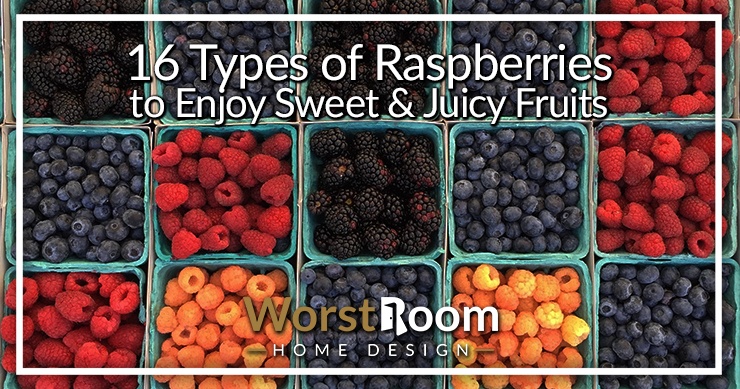
There cannot be a single human being who does not enjoy the sweet and juicy deliciousness of a raspberry. If the world was a perfect place, you would be able to enjoy the many types of raspberries whenever you want throughout the year.
Wait, you can. Raspberries have both summer bearing and everbearing varieties so that you can do exactly that. However, it is wise to know about all the different varieties of raspberries before you go on thinking about growing them on your own.
After all, not everyone will like all the different varieties, and each variety has its unique taste and flavor. Thankfully, we will give you all of that information through this article.
16 Types of Raspberries
In this article, we have decided to give you brief overviews of 15 of the most prominent kinds of raspberries. We have included information regarding their shape, size, taste, ideal harvest conditions, and ideal time of harvest.
Boyne Raspberries
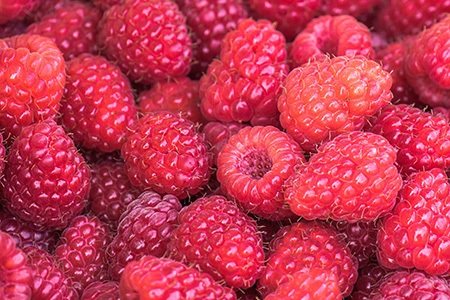
This is undoubtedly the most popular variety of raspberries, and it is the variety we usually associate raspberries with. It has the signature bright red color to its fruit, and it is juicy and sweet. It essentially comes with all the textbook raspberry attributes.
There is a good reason behind it being so popular. These raspberry types are quite easy to grow, and there are very few risks associated with growing it as it is extremely resistant to diseases.
When it comes to the right time of harvest, you should keep in mind that it is a summer-bearing variety, and thus early July is the apt time for harvest.
Red raspberries are cold tolerant and thus have the greatest range of growth across the globe. You can find them even in Canada and Alaska where the native tribes there would eat these alongside salmon roe, which is why there these raspberries are referred to as salmonberries.
You will know that it is ready when the plant has grown at least 3-4 feet in height. For the best yield, you should try growing it in full sun or at least partial shade. Another similar option are Amity raspberries and Canby raspberries, if you want to branch out into some cultivars from here.
Jewel Raspberries
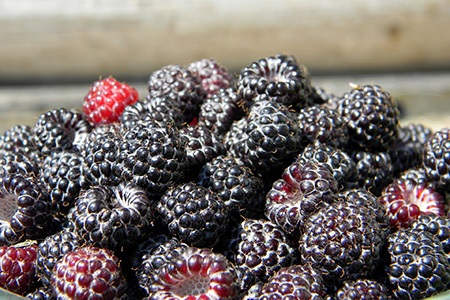
Unlike the previous red raspberry species, this one is black (not be confused with wild blackberries). If you’re one of those people who associate raspberries with the color black, these are most likely the ones you’re thinking of.
Unlike the Boyne variety, you should harvest these in late June. The fruits tend to be quite large and sweet. Despite the fruits being so large, the plants don’t share the same fate. The mature height for the plants is around 24-36 inches only.
However, growing these raspberries isn’t completely risk-free. You should be very careful about keeping the soil moist at all times if you want the best yield.
They say Jewel types of raspberries are a cross between the Dundee and Bristol raspberry varieties. Another similar option is the Loganberry, which is a cross between a wild blackberry and a red raspberry.
Royalty Raspberries
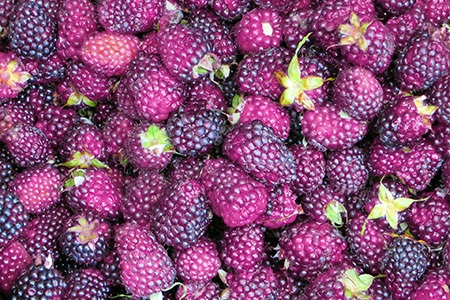
These raspberries look like the lovechild of the red and black varieties of raspberries and take on a purple color as a result. The fruits tend to be quite large and juicy, but they are not as sweet as the previous two varieties covered in the article.
Purple raspberries do have the novelty of being an interesting shade of color, though. Other purple raspberry varieties to explore include:
- Brandywine raspberries
- Sodus raspberries
- Clyde raspberries
One great aspect of growing these varieties is that the harvest is usually massive. They fully grow around mid-July, when their height is about 3-4 feet. And the number of fruits you can get from the harvest is genuinely impressive.
Anne Raspberries
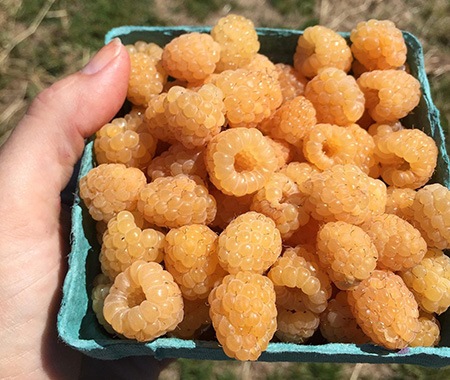
So far, the only color of raspberries we have left out is the golden ones. Among the golden raspberries, these are easily the most popular.
Even though they are everbearing varieties, the best time to harvest them is in early July. During this time, you will get large and juicy fruits that are very sweet and have a distinctly tropical flavor to them.
Furthermore, these raspberry types are very resistant to diseases, and thus harvesting them is less risky than other variety of raspberry. It's definitely something you want to avoid if your intention is to eat them and not have them for looks.
Cascade Delight Raspberries
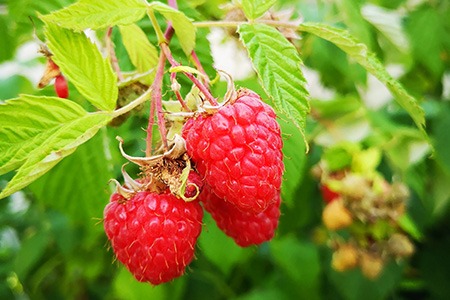
Going back to red varieties of raspberries, these plants yield large, bright red fruits. While they are not as juicy as some of the other varieties on the list, they are still very sweet. They go well with elderberries, in my opinion, if you want to know how to grow elderberries.
They should be harvested around mid-July. The best thing about these raspberries is that they are quite the grower, and you are not going to be disappointed with the yield. Provided that some conditions are met, you will get a medium to large yield from these plants.
Raspberry Shortcake Raspberries
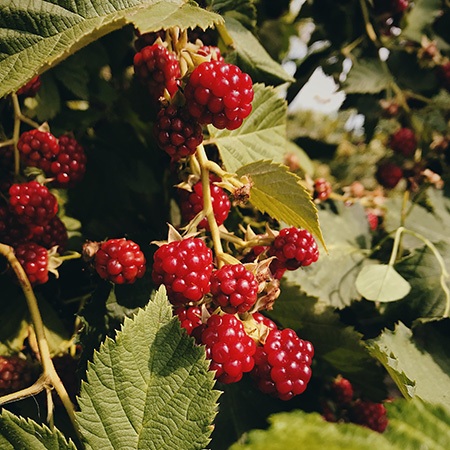
These types of raspberries are best for planting in small spaces. If you don’t have large farms to plant raspberries, these are the ones you should be looking into.
You can plant them in small or medium-sized pots. However, they require full sun exposure to grow properly. They generally grow up to 2-3 feet.
Aside from requiring full sun exposure, these plants also need moist soil to grow. So, there is an added hassle to cultivating these varieties of fruits.
Fall Gold Raspberries
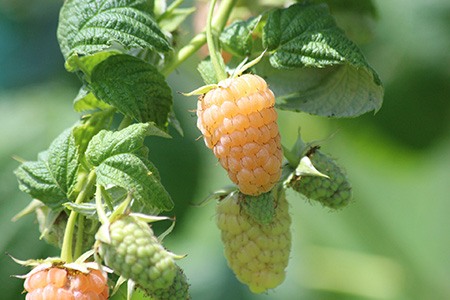
Despite the name suggesting that these raspberries are Fall fruits, they can be harvested in all seasons. Not only that, but you can also harvest them twice in one season. The name also suggests that these fruits are gold in color and the raspberries live up to that.
The plants are very small and only grow up to 24-36 inches. They are very tolerant of cold and so you can easily plant them in winter as well.
Joan J Raspberries
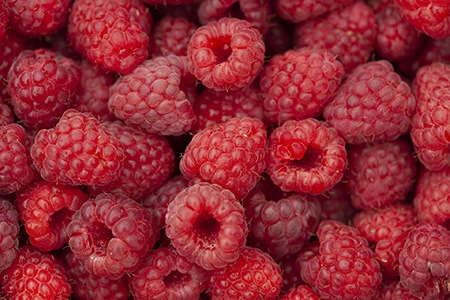
While most varieties of raspberries tend to be quite thorny, you will not face that problem with this variety of raspberries. These fruits tend to be very sweet and small or medium in size, depending on the harvest.
Speaking of harvest, you can harvest these raspberry species at three different times; they are July, August, and mid-September. Among other edible berry bushes, you can get so much fruit from these every year compared to others.
September Raspberries
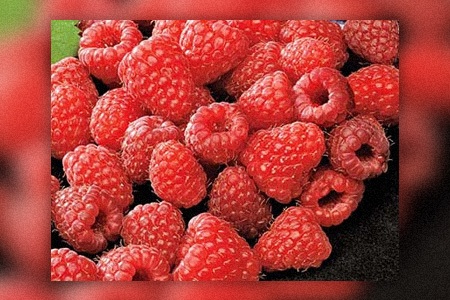
If it wasn't clear from the name alone, the best time to harvest these varieties of raspberries is in September. However, you can harvest them in other seasons, too, as they are everbearing.
Among all species of raspberry plants, these tend to be the tallest as they grow up to 4-6 feet in height when they mature. The fruits can either be red or yellow, depending on the time of harvest.
Farmers love cultivating these kinds of raspberries as the raspberries have very few requirements and can grow in many different soil types.
Killarney Raspberries
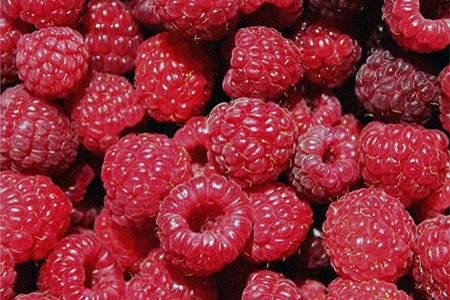
While these types of raspberries are primarily a summer-bearing variety, they are quite resistant to cold. They tend to yield medium-sized fruits that are sweet and juicy.
The color of the fruits can be medium red to dark red, depending on the specific conditions of harvest. The best time to harvest these is in mid-July.
Bababerry Raspberries
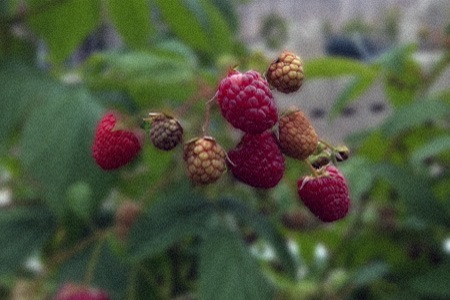
These kinds of raspberries are extra large compared to other varieties of raspberries. The fruits alone grow up to one and a half inches long. These berries are bright red and taste a lot like the Boyne variety, which is liked by almost everyone.
These fruits are summer bearing. So, the best time to harvest these would be around July. Mid-July is generally considered the apt time for harvesting these raspberry types.
Golden Summit Raspberries
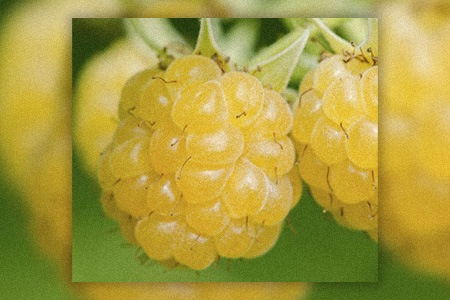
Like the Bababerries and Amber raspberries, these fruits are very large and grow almost up to 0.75 inches. However, they are not as juicy. They are one of the firmer varieties of raspberries. If the name didn’t give it away already, they are bright gold.
This is an everbearing variety. Not only that, but they also have heavy yields in all seasons. Their resistance to the cold makes them the perfect kinds of raspberries to plant in the winter.
Heritage Raspberries
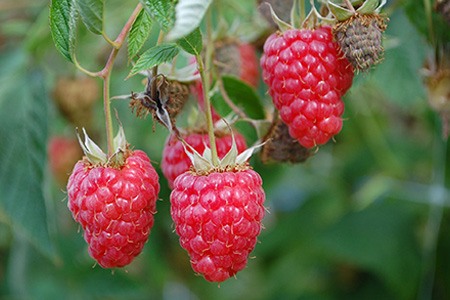
This variety of raspberries is very popular among people who don’t like their raspberries excessively sweet. Compared to other red varieties, these tend to be quite mild in taste, but they are very juicy and delicious nonetheless.
These raspberry varieties yield bright red fruit and grow very fast. Moreover, they are one of the fastest-growing species of raspberries and can grow up to 3-4 feet in height. They are also very resistant to diseases, and so there are comparatively lesser risks involved in cultivating them.
Polka Raspberries
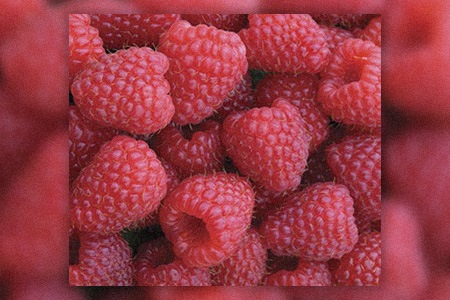
These are one of the taller varieties of raspberries as they can grow up to 4-6 feet in height. While the fruits tend to be juicier than other varieties, they are only mildly sweet. However, they are loved because of their unique flavor.
The fruits of these types of raspberries are usually dark red, and they are everbearing. You can harvest them at any time between July and September.
Dorman Red Raspberries
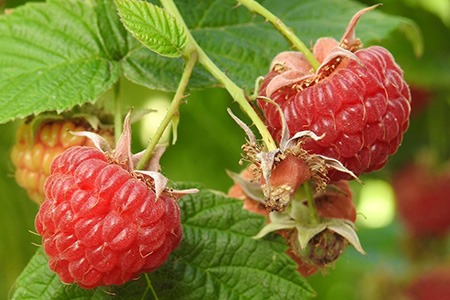
If it wasn't clear from the name, the fruits yielded by these varieties are deep red, and they tend to be very sweet. The fruits are quite long compared to most other kinds of raspberries.
The ideal time to harvest these is in mid-June. While you can harvest them in other times as they are everbearing, the yield you will get around mid-June will always be far superior to those of other time frames.
Latham Raspberries
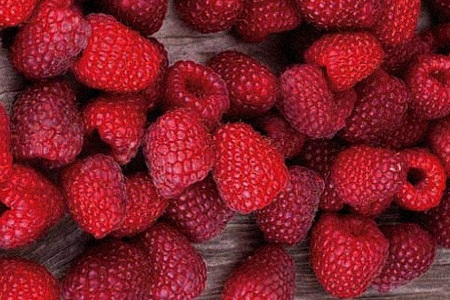
These summer-bearing red raspberry types are a fun choice for those seeking to grow their own raspberries, but one that comes with some potential issues discussed below.
The mid-sized fruit is easy to pick, the plant can tolerate many soil conditions, and their fruits are sweet enough that you'll eat them fresh off the plant, you'll can some, and you'll freeze the rest.
The bush itself stands upright and features thorns. It's self-pollinating, like Prelude raspberries, which is always nice, and is cold-hardy so you won't suffer losing them to the lower temperatures.
One thing to be aware of is they can suffer a range if diseases and pests, which include but aren't limited to:
- Aphids
- Leafhoppers
- Raspberry Beetles
- Raspberry Leaf & Bud Mites
- Glasshouse Red Spider Mites
- Raspberry Rust
- Raspberry Spur Light
- Raspberry Cane Blight
- Powdery Mildew
You may see these glasshouse red spider mites and wonder where do spider mites come from since they seemingly appeared out of nowhere. That article will teach you how to deal with them.
Types of Raspberries to Bring Variety to Your Garden & Plate
Regardless of whether you want to grow raspberries or simply consume them, it is always best to know about all the various types of raspberries so you can explore their flavors.
Not only will you be able to know which raspberry species you like and which ones you don’t, but you will also be able to appreciate the endless beauty and diversity of nature.
Now, whether you want to grow them yourself or simply consume the delicious fruits with greater knowledge about them, the choice is up to you. We hope you can obtain fulfillment in whichever path you choose.
Whatever purpose you had in mind that led you to stumble upon this article wanting to know about the different types of raspberries, we hope we were able to fulfill that.



